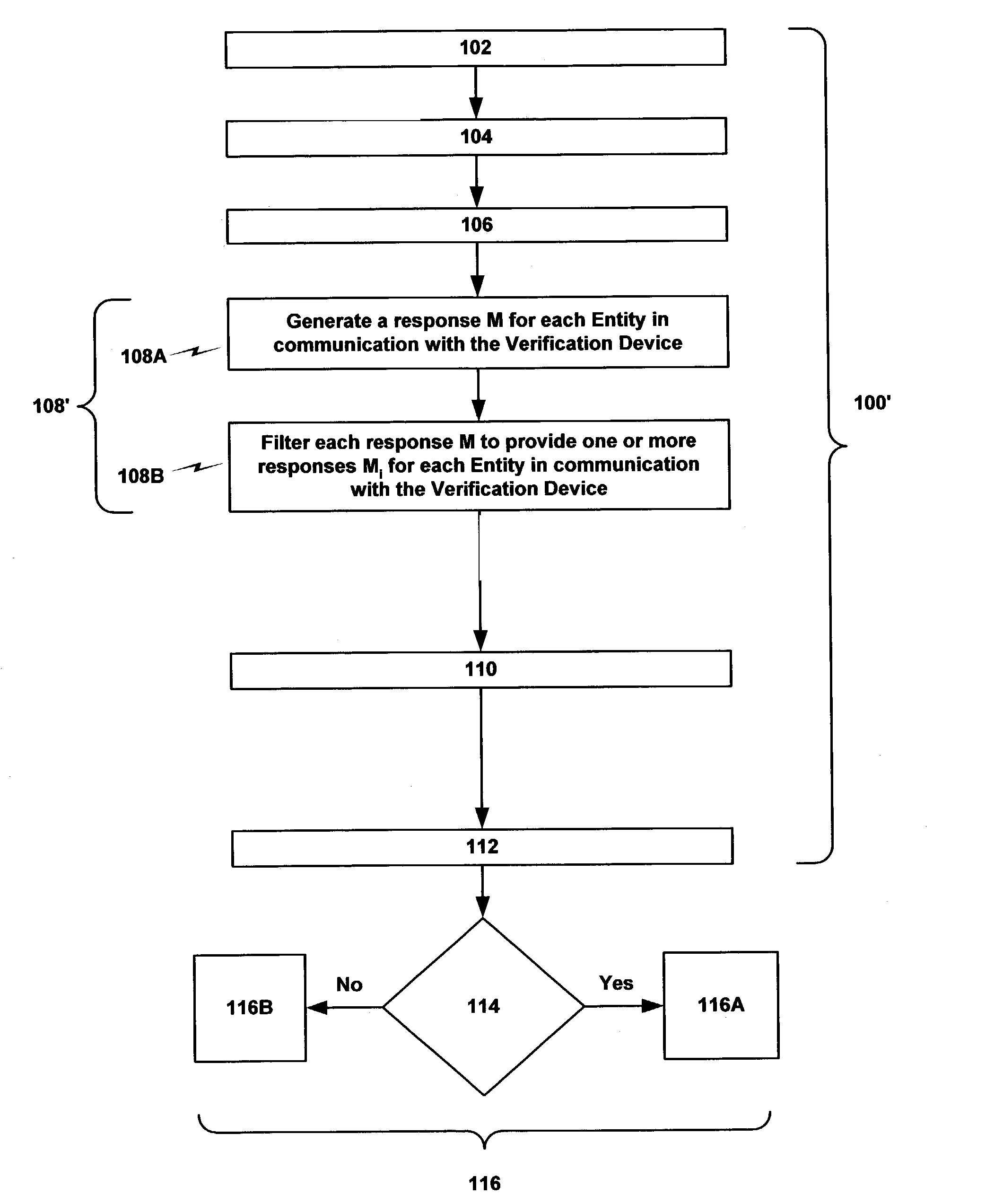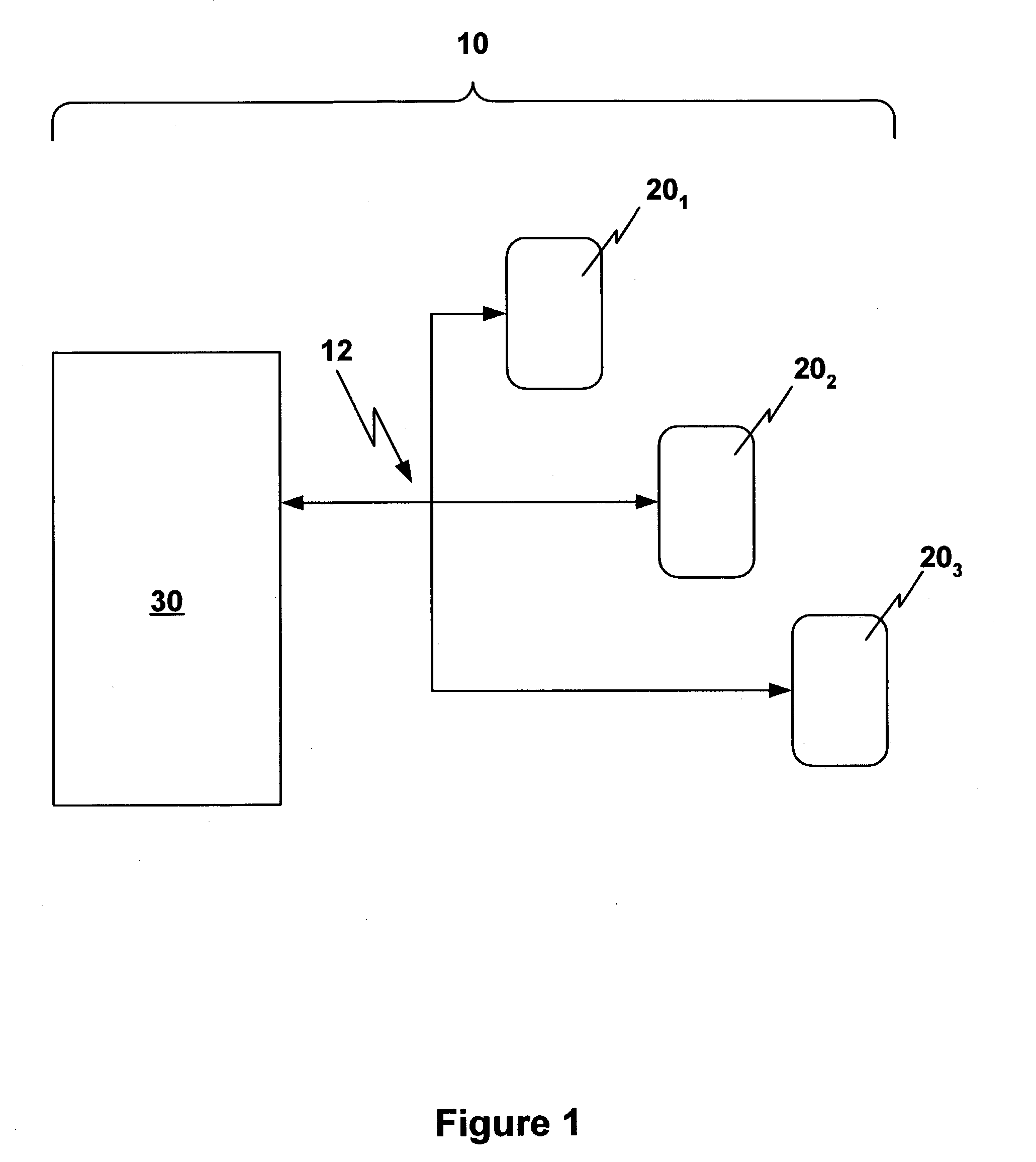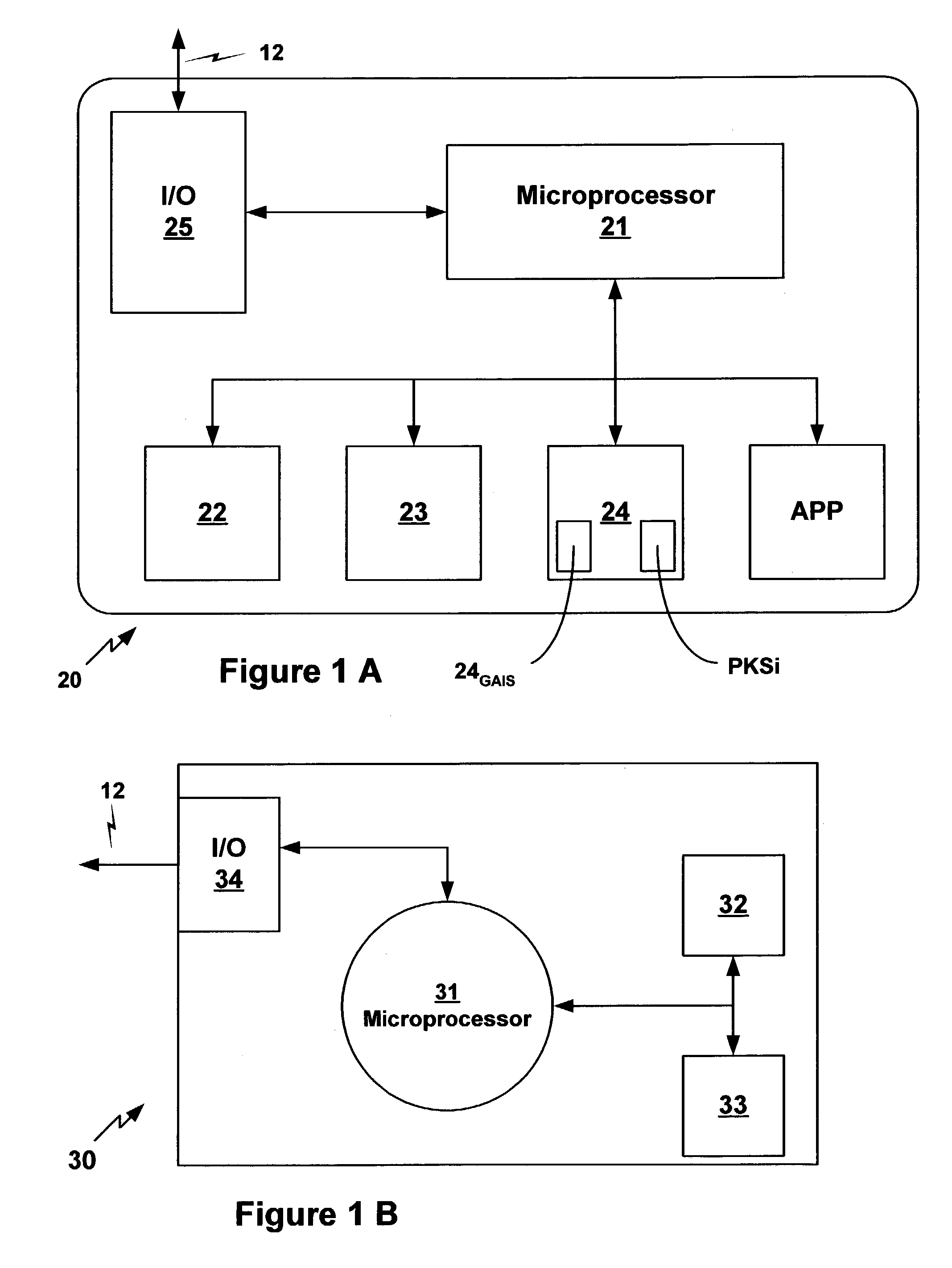Methods and systems for group authentication using the naccache-stern cryptosystem in accordance with a prescribed rule
a cryptosystem and naccachester technology, applied in the field of cryptosystem authentication, can solve the problems of increasing the likelihood of a prescribed rule/policy being compromised, affecting the security of communication, and effectively compromising the confidentiality and authentication capability of the symmetric cryptographic system,
- Summary
- Abstract
- Description
- Claims
- Application Information
AI Technical Summary
Problems solved by technology
Method used
Image
Examples
first embodiment
[0053](iv) generating a response Mi (where subscript i identifies the response of any particular Entity) for each Entity in communication with the Verification Device (in the case of non-monotonic access conditions discussed below Mi consists of an ordered sequence of values, one for each value in the ordered sequence of values of the corresponding PKSi). For a Group Authentication method and system according to the present invention this encompasses:[0054](a1) decrypting of the ciphertext challenge C by each Entity in communication with the Verification Device using such Entity's Private Key Share(s) PKSi to directly generate the response Mi for each such Entity.
second embodiment
For a Group Authentication method and system according to the present invention this encompasses:[0055](a2) decrypting of the ciphertext challenge C by each Entity in communication with the Verification Device using such Entity's Private Key Share PKSi to generate a response M, and then filtering such response M to provide the response Mi indirectly for each such Entity.
[0056](v) transmitting the response Mi of each such Entity to the Verification Device using the communications link 12 between the Entities and the Verification Device;
[0057](vi) combining the responses Mi in accordance with the Group Authentication protocol;
[0058](vii) determining whether any combination of responses Mi define a Group that is authorized to implement or perform the Operation in accordance with the prescribed Rule, i.e., do any combinations of responses Mi equal the random number M; and
[0059](viii) effecting the appropriate course of action based upon the outcome(s) of the determination step, which wi...
PUM
 Login to View More
Login to View More Abstract
Description
Claims
Application Information
 Login to View More
Login to View More - R&D
- Intellectual Property
- Life Sciences
- Materials
- Tech Scout
- Unparalleled Data Quality
- Higher Quality Content
- 60% Fewer Hallucinations
Browse by: Latest US Patents, China's latest patents, Technical Efficacy Thesaurus, Application Domain, Technology Topic, Popular Technical Reports.
© 2025 PatSnap. All rights reserved.Legal|Privacy policy|Modern Slavery Act Transparency Statement|Sitemap|About US| Contact US: help@patsnap.com



